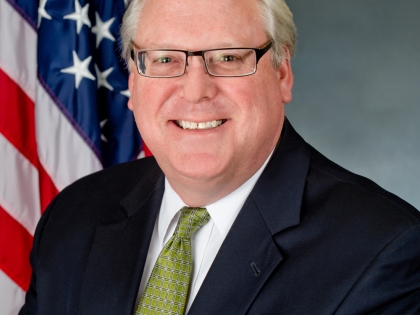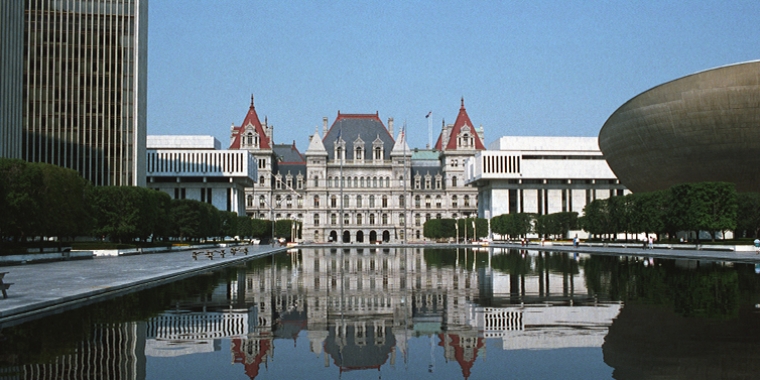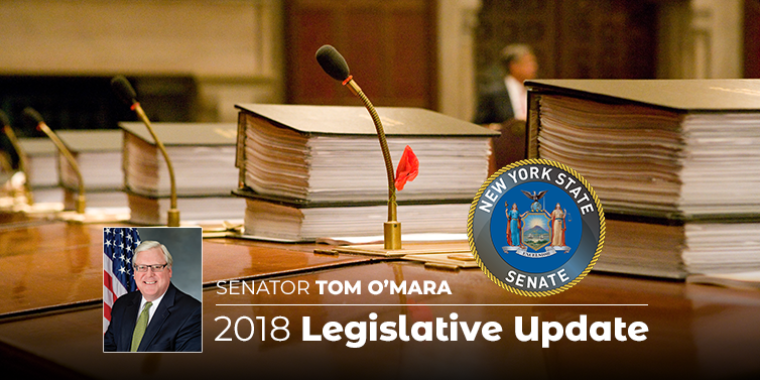
Senator O'Mara's weekly column 'From the Capitol' -- for the week of September 2, 2024 -- 'Will energy summit move NY toward a better future?'
September 4, 2024
-
ISSUE:
- CLCPA; clean energy mandates

Senator O'Mara offers his weekly perspective on many of the key challenges and issues facing the Legislature.
Senator O'Mara offers his weekly perspective on many of the key challenges and issues facing the Legislature, as well as on legislative actions, local initiatives, state programs and policies, and more. Stop back every Monday for Senator O'Mara's latest column...
This week, "Will energy summit move NY toward a better future?"
Governor Kathy Hochul this week convenes a two-day "Future Energy Economy Summit" in Syracuse to begin what many of us hope will be a long-overdue, sincere, and transparent rethinking of New York State's energy future.
This rethinking is badly needed. Over the past few months doubts have exploded over the Albany Democrats' current approach -- an approach that has been built on rapidly imposing radical and sweeping clean energy mandates on all New Yorkers following the enactment of the Climate Leadership and Protection Act (CLCPA) in 2019. The state's Climate Action Council (CAC), established through the CLCPA, issued its action report in December 2022, a year and four months after Governor Hochul was sworn in as New York's chief executive.
Many of us, from the outset, warned that the failure of Governor Hochul and legislative Democrats to put forth a comprehensive cost-benefit analysis of the costs of implementing their mandates under the prescribed timeline doomed the entire effort to failure. We have questioned the affordability, feasibility, and reliability of the strategy for ratepayers and taxpayers, business organizations, and local economies.
We have done so with good reason.
The New York Independent System Operator (NYISO), which is responsible for managing the supply and transmission of electricity across New York State, issued a report in 2022, three months prior to the CAC's final report, titled "2021-2040 System & Resource Outlook."
That report warned of future reliability shortfalls due to the CLCPA which will require the state's electric grid to triple its current generating capacity by between 110 gigawatts (GW) and 130 GW by 2042. This includes, because of the intermittent and unreliable nature of wind and solar, between 20 GW and 47 GW of Dispatchable Emissions-Free Resources (DEFRs), a generic name to describe an unknown source not yet developed. It will require 20 GW of new clean electricity generation by 2029. To put that growth in perspective, during the 23 years to September 2022, the state only developed 13 GW of new energy production, and only 2.6 GW over the five years prior. During that same five-year period, New York deactivated 4.8 GW of generation, for a net loss of over 2 GW -- enough to power over a million homes.
"That means that New York is currently going backwards, not forwards," according to NYSIO (read more at: https://www.empirecenter.org/publications/nyiso-predicts-troubled-energy-future/).
In short, the NYISO lives in reality while the Albany Democrats' CLCPA and CAC hail from Utopia. In its 2022 report the NYISO politely characterized the required growth in electric generation as "unprecedented" and that "future uncertainty is the only thing certain (of the plan)." Bear in mind that the unknown costs of all of this will be borne by New York ratepayers and taxpayers. The recently approved massive rate hikes by NYSEG, RG&E, and National Grid, which when fully phased in will increase monthly bills from $40-$60 for an average home (much larger impacts to industries), are no coincidence and are just the tip of the iceberg of how all of this will exacerbate the overall unaffordability crisis we have in this state.
Just this July, a report from the Hochul administration itself admitted that their timeline to achieve 70 percent renewable energy by 2030 and zero emissions by 2040 isn't realistic and, in fact, can't be met under the plan with current technologies as it stands.
Later in July, NYISO reiterated its warnings that under the current timeline the state is "at risk of blackouts without significant new generation coming online before the middle of the next decade."
Then came a new audit and report from State Comptroller Thomas DiNapoli that the implementation of the Democrats' climate agenda has been seriously flawed and, especially, that its true costs remain unknown. The comptroller's audit further cemented long-held doubts over the current plan's affordability, feasibility, and reliability.
Consequently, Governor Hochul convenes a so-called energy summit this week. Will it mark a "back to the drawing board" moment on the CLCPA timeline and other climate mandates? Equally important, will it lead to an honest, open, long-awaited, and desperately needed public discussion on the realities of where we're headed? That's what many of us are hoping. We'll see.
In that spirit of rethinking, our Senate Republican Conference recently put forth a comprehensive set of proposals to chart a different course. We call for refocusing on affordability, feasibility, and reliability. We offer what we believe are commonsense alternatives to delay the CLCPA mandates while providing relief to taxpayers, ensuring the reliability of the grid, and ensuring a diverse energy portfolio that will keep energy options affordable and accessible for the long term. Our "Creating Lasting Affordable Energy for New York" plan would:
> delay the implementation of the CLCPA mandates by ten years, giving the state time to develop a sustainable plan to build affordable, clean energy infrastructure and give state agencies more flexibility to adjust those timeframes if the cost to New Yorkers is determined to be unaffordable while also considering the impact of the CLCPA's compliance on reliable and affordable alternatives for heating and other services currently supplied by natural gas, including renewable natural gas and hydrogen;
> create the "Ratepayer Relief Act" to determine the actual cost of CLCPA/CAC mandates;
> prevent the state from closing any power generation facility before new facilities come online;
> study the feasibility of bringing the Indian Point nuclear power plant, shuttered by former Governor Andrew Cuomo in 2021, back online and expand investment and research into alternative small-scale nuclear energy possibilities. The closure of Indian Point caused an increase in greenhouse gas emissions in excess of 40% in the New York City metro region due to increased use of peaker plants;
> establish a commission to evaluate the impact of grid electrification on the safety and reliability of heating systems in extreme winter weather incidents that cause power outages;
> create the "Rural Energy Infrastructure Act of 2025" to provide a tax credit for individuals in underserved or unserved areas of the gas system to assist the buildout of natural gas infrastructure to help bring service to those areas;
> prohibit the state from mandating the purchase of only electric cars in 2035 and electric school buses in 2027; and
> establish the New York state hydrogen vehicle task force to examine another source of clean and affordable fuel.
Since the CLCPA's approval in 2019, Albany Democrats have been moving at world record speed to pile one unaffordable mandate on top of another unworkable mandate on top of the next unrealistic mandate desperately trying to inflict a zero-emissions economy on this entire state that will have zero impact on the climate. Remember that NYS accounts for just 0.4% of global emissions. These actions will come with a devastating price tag and consequences for ratepayers and taxpayers, businesses and industries, school districts, farmers, and entire local economies.
Let's hope this week's summit begins a straightforward reassessment and reexamination of the realities of the current strategy.
###
Share this Article or Press Release
Newsroom
Go to Newsroom'Flash flooding in the Twin Tiers: What you need to know'
August 14, 2018



2018 Legislative Update (August)
August 3, 2018
